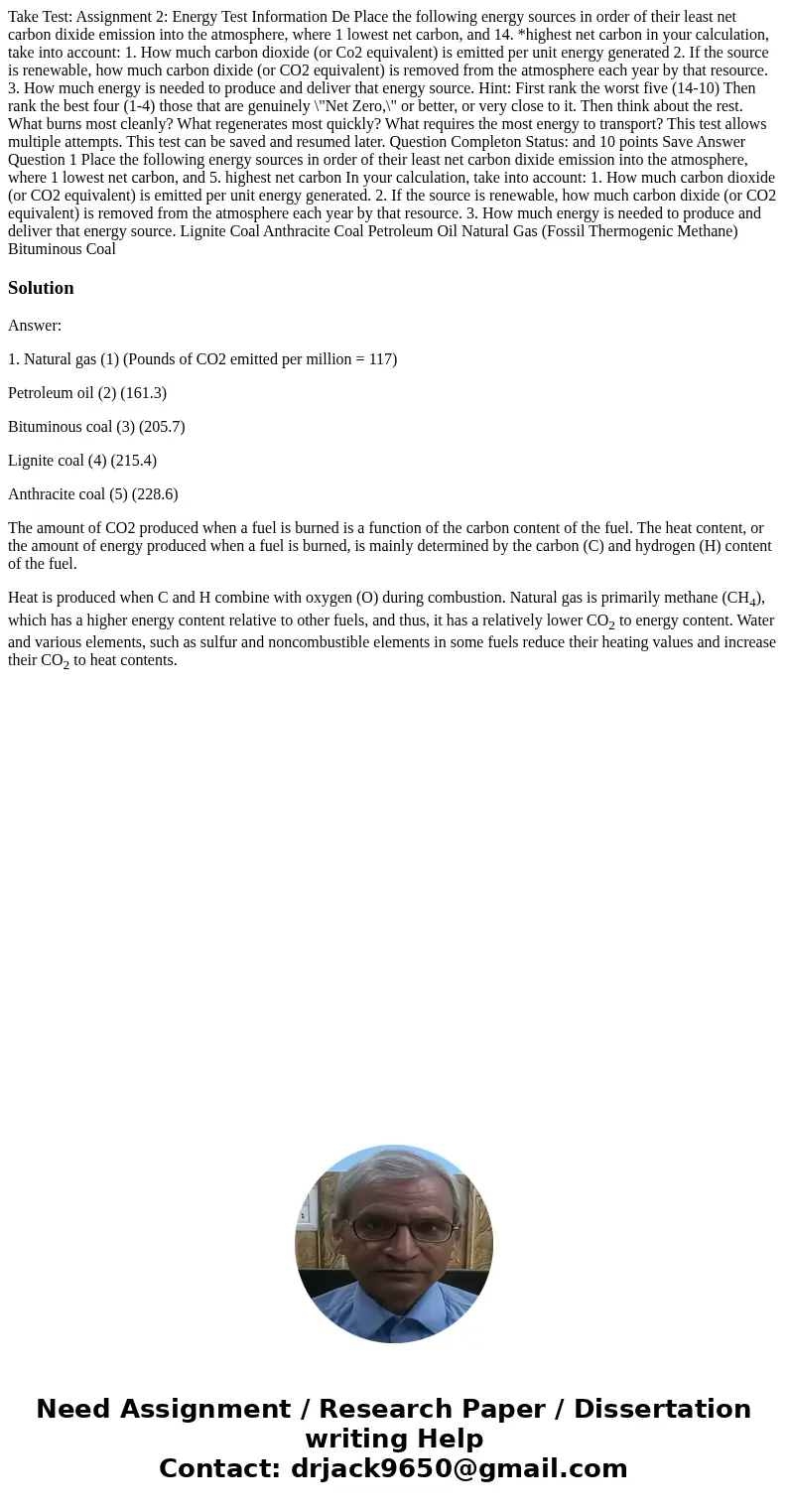Take Test: Assignment 2: Energy Test Information De Place the following energy sources in order of their least net carbon dixide emission into the atmosphere, where 1 lowest net carbon, and 14. *highest net carbon in your calculation, take into account: 1. How much carbon dioxide (or Co2 equivalent) is emitted per unit energy generated 2. If the source is renewable, how much carbon dixide (or CO2 equivalent) is removed from the atmosphere each year by that resource. 3. How much energy is needed to produce and deliver that energy source. Hint: First rank the worst five (14-10) Then rank the best four (1-4) those that are genuinely \"Net Zero,\" or better, or very close to it. Then think about the rest. What burns most cleanly? What regenerates most quickly? What requires the most energy to transport? This test allows multiple attempts. This test can be saved and resumed later. Question Completon Status: and 10 points Save Answer Question 1 Place the following energy sources in order of their least net carbon dixide emission into the atmosphere, where 1 lowest net carbon, and 5. highest net carbon In your calculation, take into account: 1. How much carbon dioxide (or CO2 equivalent) is emitted per unit energy generated. 2. If the source is renewable, how much carbon dixide (or CO2 equivalent) is removed from the atmosphere each year by that resource. 3. How much energy is needed to produce and deliver that energy source. Lignite Coal Anthracite Coal Petroleum Oil Natural Gas (Fossil Thermogenic Methane) Bituminous Coal
Answer:
1. Natural gas (1) (Pounds of CO2 emitted per million = 117)
Petroleum oil (2) (161.3)
Bituminous coal (3) (205.7)
Lignite coal (4) (215.4)
Anthracite coal (5) (228.6)
The amount of CO2 produced when a fuel is burned is a function of the carbon content of the fuel. The heat content, or the amount of energy produced when a fuel is burned, is mainly determined by the carbon (C) and hydrogen (H) content of the fuel.
Heat is produced when C and H combine with oxygen (O) during combustion. Natural gas is primarily methane (CH4), which has a higher energy content relative to other fuels, and thus, it has a relatively lower CO2 to energy content. Water and various elements, such as sulfur and noncombustible elements in some fuels reduce their heating values and increase their CO2 to heat contents.

 Homework Sourse
Homework Sourse